Celestial Highway Between Planets
© NASA / JPL-Caltech
In our expansive solar system, an area of captivating intrigue known as the Asteroid Belt resides. This torus-shaped region, centered around the Sun, extends roughly between the orbits of Jupiter and Mars. Within it, a multitude of solid, irregularly shaped objects known as asteroids or minor planets can be found. These objects vary greatly in size but are significantly smaller than planets, with an average distance of about one million kilometers (or six hundred thousand miles) between them. This portion of the asteroid belt is often referred to as the main asteroid belt to distinguish it from other asteroid populations within the Solar System.
Among circumstellar discs in the Solar System, the asteroid belt is the smallest and innermost. Other classes of small Solar System bodies in different regions include near-Earth objects, centaurs, Kuiper belt objects, scattered disc objects, sednoids, and Oort cloud objects. The four largest asteroids—Ceres, Vesta, Pallas, and Hygiea—account for approximately 60% of the total mass within the main belt. In terms of mass, the entire asteroid belt is estimated to be around 3% that of the Moon.
FORMATION OF ASTEROID BELT

The Asteroid Belt occupies a space nestled between the orbits of Mars and Jupiter, spanning about 2.1 to 3.3 astronomical units (AU) from the Sun. An astronomical unit equates to the average distance from Earth to the Sun, which is approximately 93 million miles or 150 million kilometers. The genesis of the Asteroid Belt is a multifaceted process shaped by the gravitational interplay in the early stages of the solar system.
GRAVITATIONAL INTERACTIONS
One prevailing theory for the formation of the Asteroid Belt is based on the gravitational interactions between the young Sun and the protoplanetary disk of gas and dust that surrounded it. As the Sun formed, it exerted a strong gravitational influence on the surrounding material, causing it to clump together.
JUPITER’S INFLUENCE
The presence of Jupiter played a crucial role in the formation of the Asteroid Belt. Jupiter’s massive gravitational pull prevented the material in its vicinity from coalescing into a single planet. Instead, it disrupted the accretion process, creating gaps in the protoplanetary disk.
DISRUPTED PLANETESIMAL
As a result of Jupiter’s influence, numerous planetesimals (small building blocks of planets) were unable to merge into larger bodies. These planetesimals remained scattered between the orbits of Mars and Jupiter, eventually forming the Asteroid Belt.
TYPES OF ASTEROIDS
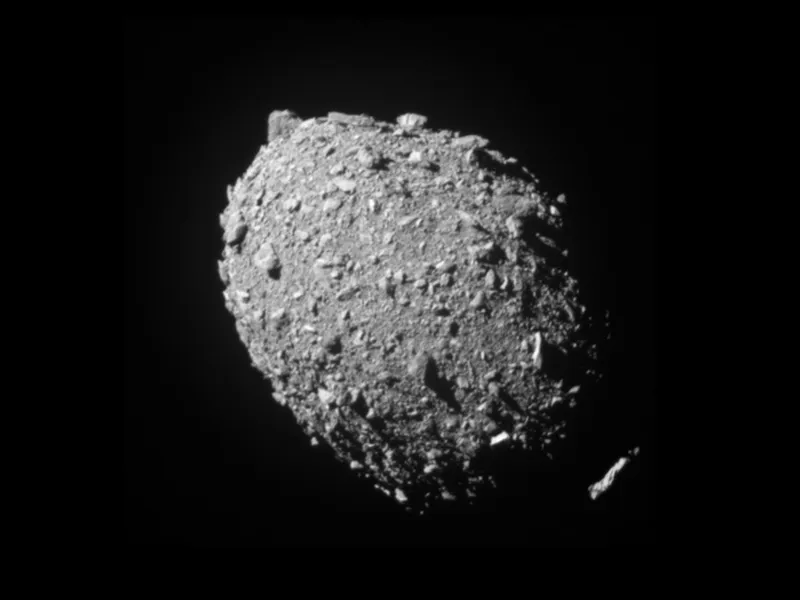
C-TYPE ASTEROIDS (Carbonaceous Chondrites)
COMPOSITION
C-type asteroids are primarily composed of carbonaceous materials, including carbon, silicates, and water ice. They are often referred to as “carbonaceous chondrites” because their composition is similar to that of certain meteorites found on Earth.
APPEARANCE
C-type asteroids typically have a dark, reddish, or neutral colour. Their surfaces are less reflective than other asteroid types, which gives them a darker appearance.
NOTABLE C-TYPE ASTEROIDS
CERES (1 Ceres): Ceres is the largest object in the Asteroid Belt and was classified as both an asteroid and a dwarf planet. It is a C-type asteroid. Ceres is particularly intriguing because it may contain water ice beneath its surface, and it was visited by NASA’s Dawn spacecraft, which provided valuable data about its composition and geology.
MATHILDE (253 Mathilde): Mathilde is another prominent C-type asteroid. It was visited by the Near Earth Asteroid Rendezvous (NEAR) spacecraft in 1997. NEAR’s mission to Mathilde helped scientists learn more about the characteristics of C-type asteroids.
S-TYPE ASTEROIDS (Silicaceous)
COMPOSITION
S-type asteroids are primarily composed of silicate minerals, such as pyroxenes and olivines. These minerals are common in the Earth’s crust and are known as “stony” materials.
APPEARANCE
S-type asteroids often have a brighter, stony appearance compared to other asteroid types. They are relatively reflective, which makes them easier to observe from Earth.
NOTABLE S-TYPE ASTEROIDS
EROS (433 Eros): Eros is an S-type asteroid and was visited by NASA’s Near Earth Asteroid Rendezvous (NEAR) spacecraft in 2000. The mission provided detailed information about Eros’s composition, shape, and surface features. Eros is elongated in shape and was one of the first asteroids to be closely studied by a spacecraft.
PALLAS (2 Pallas): Pallas is one of the largest S-type asteroids in the Asteroid Belt. It has an irregular shape and is known for its unique characteristics. Pallas has been observed extensively by ground-based telescopes.
M-TYPE ASTEROIDS (Metallic)
COMPOSITION
M-type asteroids are primarily composed of metal, particularly nickel and iron. They are often referred to as “metallic” asteroids due to their high metal content.
APPEARANCE
M-type asteroids tend to have a metallic, reflective appearance, making them stand out against the dark background of space.
NOTABLE M-TYPE ASTEROIDS
16 PSYCHE (16 Psyche): 16 Psyche is a fascinating M-type asteroid that is believed to be the exposed metallic core of a protoplanet. NASA is planning a mission, also named Psyche, to study this asteroid in detail. It is of great interest to scientists because it provides a unique opportunity to learn more about the interior composition of celestial bodies.
(216) KLEOPATRA (216 Kleopatra): Kleopatra is a binary asteroid composed of two M-type components. It has an elongated shape and is known for having two moon-like companions. The unusual characteristics of Kleopatra make it a notable object of study.
SIZE AND SCALE
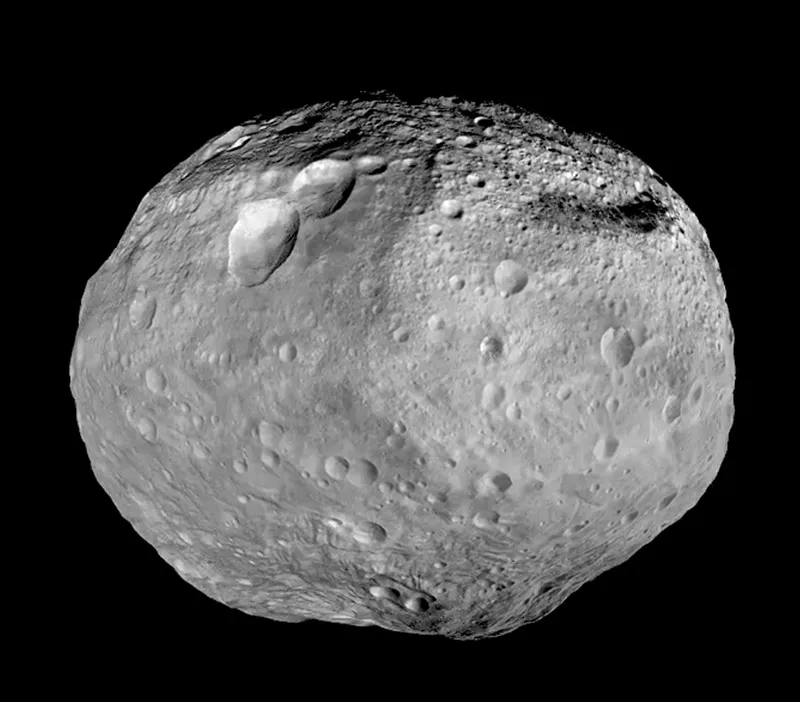
The asteroid belt is a vast region in our solar system that is characterized by the presence of numerous asteroids, dwarf planets, and other small objects. Asteroids within the belt are not evenly distributed. They are spread out in various orbits, with some being more densely packed than others. This non-uniform distribution is influenced by gravitational interactions with Jupiter and other planets.
LOCATION
The asteroid belt occupies the space between the orbits of Mars and Jupiter, covering a region roughly extending from 2.1 to 3.3 astronomical units (AU) from the Sun. An astronomical unit (AU) represents the average distance from Earth to the Sun, measuring approximately 93 million miles (150 million kilometers).
WIDTH
The width of the asteroid belt varies, but it is typically several million kilometers wide. The exact boundaries of the asteroid belt are somewhat arbitrary, and the region contains a diverse population of objects, including asteroids, dwarf planets, and smaller debris.
NUMBER OF OBJECTS
There are hundreds of thousands of known asteroids in the asteroid belt, with millions more estimated to exist. These objects range in size from tiny pebbles to hundreds of kilometers in diameter.
LARGEST OBJECTS
The asteroid belt is home to some of the largest asteroids in the solar system. Notable examples include Ceres, Vesta, Pallas, and Hygiea, which are considered dwarf planets due to their size and diameters ranging from about 400 to 940 kilometers.
EVOLUTION
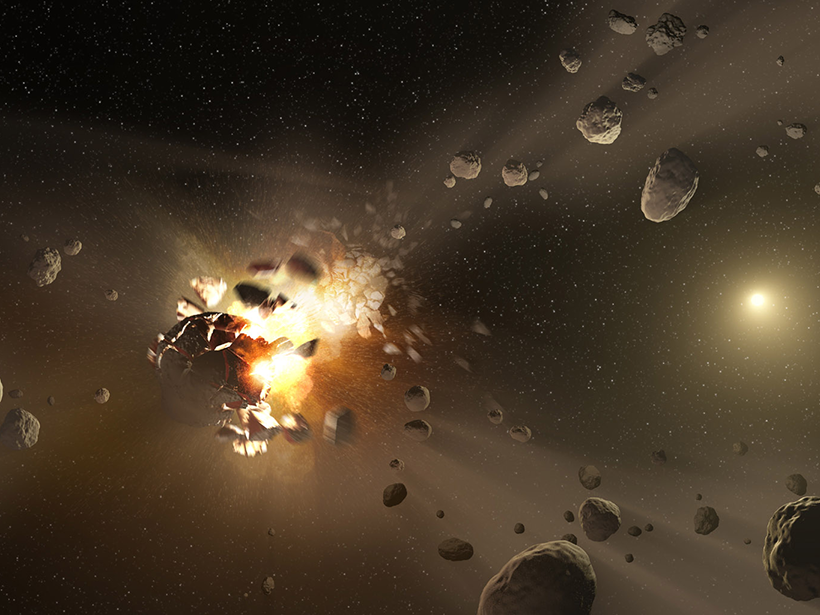
The asteroid belt, located between the orbits of Mars and Jupiter, has evolved significantly over billions of years. Its formation and ongoing evolution have been influenced by a variety of factors, including gravitational interactions, collisions, and the gravitational pull of Jupiter.
JUPITER’S INFLUENCE
The presence of Jupiter, the largest planet in the solar system, played a crucial role in the evolution of the asteroid belt. Jupiter’s massive gravitational pull prevented the planetesimals in its vicinity from coalescing into a planet. Instead, Jupiter’s gravitational influence disrupted the accretion process, leading to the formation of gaps in the protoplanetary disk.
FRAGMENTATION
The gravitational perturbations caused by Jupiter’s presence led to numerous collisions and disruptions within the asteroid belt. Many planetesimals and larger bodies were shattered into smaller fragments. This process, known as collisional fragmentation, contributed to the creation of the diverse population of asteroids we see today.
ASTEROID FAMILIES
Over time, some of the fragments resulting from collisions grouped into families of asteroids. These families share similar orbital characteristics and are believed to be the remnants of larger parent bodies that were shattered by impacts. Each family is named after a prominent member of the group.
YARKOVSKY EFFECT
The Yarkovsky effect is a phenomenon where the way an asteroid absorbs and re-emits solar radiation affects its orbital dynamics. This effect can slowly alter an asteroid’s orbit over time, causing it to drift within the asteroid belt.
MIGRATION AND RESONANCES
Some asteroids may be pushed or pulled by gravitational interactions with other planets, causing them to migrate into different regions within the asteroid belt. Additionally, some asteroids may become locked into orbital resonances with Jupiter, leading to stable orbits in specific locations within the belt.
COLLISIONAL EVOLUTION
Collisions continue to be a significant factor in the asteroid belt’s ongoing evolution. While most collisions destroy smaller bodies, they can also create new fragments and alter the orbits of surviving asteroids.
POTENTIAL RESOURCES
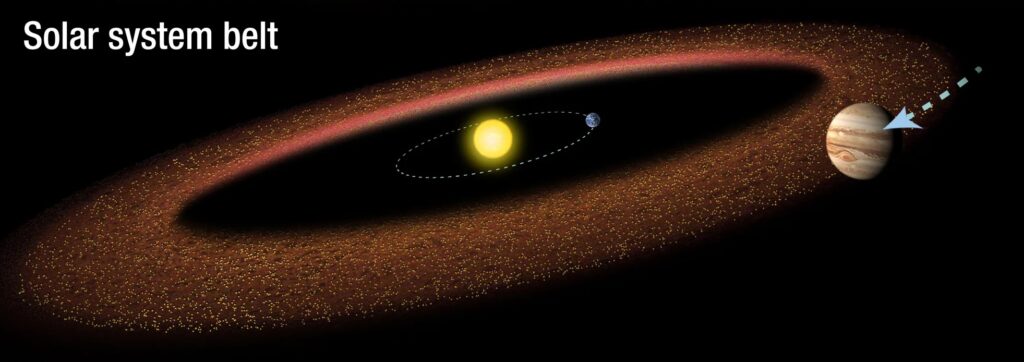
The asteroid belt is a region of space that contains a wealth of potential resources, which has led to growing interest in asteroid mining and resource utilization.
WATER ICE
Water is a critical resource for future space exploration and colonization. It can be broken down into hydrogen and oxygen, which are essential for life support and can be used as rocket propellants. Many asteroids in the outer regions of the asteroid belt are believed to contain significant amounts of water ice.
PRECIOUS METALS
Some asteroids, particularly M-type (metallic) asteroids, are rich in valuable metals such as platinum, gold, and rare Earth elements. The high concentration of these metals in certain asteroids makes them attractive targets for mining.
INDUSTRIAL MINERALS
Asteroids may contain a variety of industrial minerals and materials, including iron, nickel, cobalt, and aluminium. These materials can be used for manufacturing and construction both in space and on Earth.
REGOLITH AND SOIL
The surface material of asteroids, known as regolith or soil, can be processed to extract useful resources. Regolith can potentially provide raw materials for 3D printing and construction in space.
CARBONACEOUS MATERIALS
C-type (carbonaceous) asteroids contain organic compounds and carbon-based materials. These asteroids could serve as sources of carbon for manufacturing processes and may even hold clues about the origin of life in the solar system.
SOLAR ENERGY
Asteroids can be excellent locations for solar power generation due to their proximity to the Sun and lack of atmospheric interference. Solar panels on asteroids could generate electricity for future space missions and colonization efforts.
SPACECRAFT PROPELLANTS
Resources such as water and certain volatile compounds found on asteroids can be processed to create spacecraft propellants, reducing the need to transport propellants from Earth.
IMPACTS AND HAZARDS
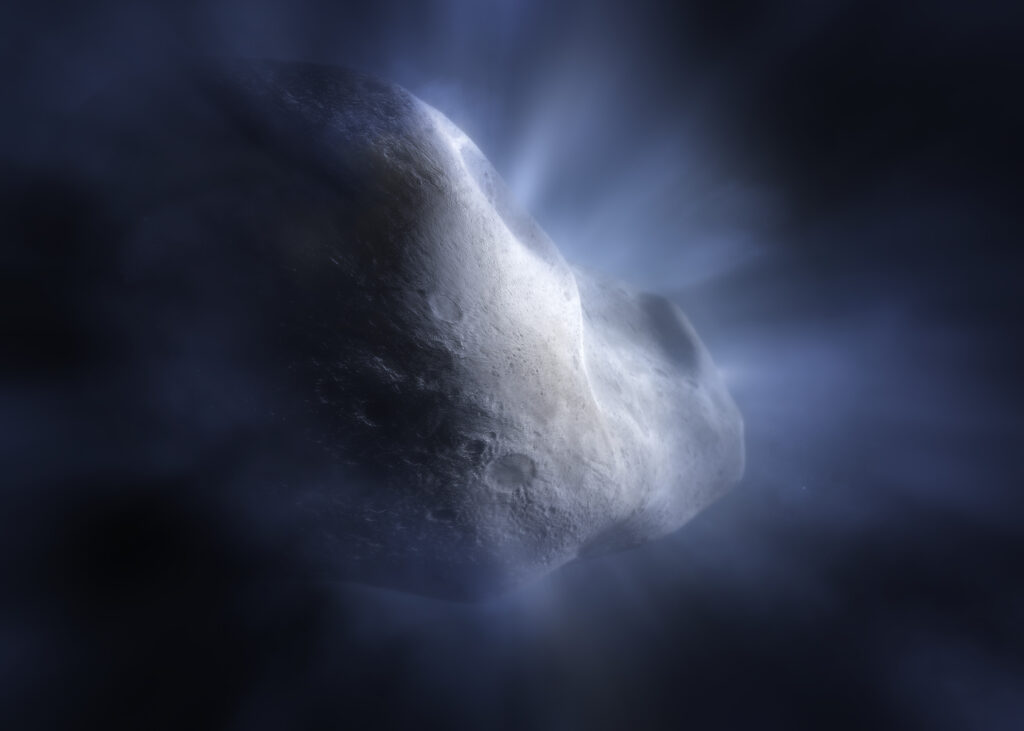
While the asteroid belt itself is relatively stable and not a source of immediate hazards, there are still some important considerations and potential impacts associated with this region of the solar system.
ASTEROID COLLISIONS
Within the asteroid belt, collisions between asteroids are relatively common due to the vast number of objects present. These collisions can create fragments and debris, altering the trajectories and compositions of asteroids.
SPACECRAFT HAZARDS
Spacecraft passing through or conducting missions in the asteroid belt must carefully navigate to avoid collisions with asteroids or the debris generated by impacts. Space agencies carefully plan mission trajectories to minimize the risk.
SPACE WEATHERING
Asteroids in the asteroid belt are exposed to solar radiation and cosmic rays, which can gradually alter their surface properties. This process, known as space weathering, can make it more challenging to study the asteroids’ compositions and histories.
POTENTIAL FOR ASTEROID IMPACT ON EARTH
While the asteroid belt is located far from Earth, some asteroids within the belt can have orbits that bring them into the vicinity of Earth. Occasionally, asteroids from the asteroid belt may become near-Earth objects (NEOs) and have the potential to impact our planet. Such impacts can have significant consequences and are closely monitored by space agencies and organizations worldwide.
RESONANCE AND ORBITAL DYNAMICS
The gravitational influence of Jupiter and other massive bodies in the solar system can create resonances and perturbations in the orbits of asteroids. Some asteroids may experience orbital changes, potentially leading to their ejection from the asteroid belt or interactions with other planets.
DIVERSITY OF ASTEROID TYPES
The composition and physical properties of asteroids vary widely. Some types, such as M-type (metallic) asteroids, can pose greater risks if they were to collide with Earth due to their high density and potential for causing significant damage upon impact.
RESOURCE EXTRACTION HAZARDS
As interest in asteroid mining and resource utilization grows, there are potential hazards associated with mining activities, including the release of debris, changes in asteroid orbits, and the risk of accidents during mining operations.
Noteworthy missions like NASA’s Dawn, Japan’s Hayabusa2, and OSIRIS-REx have ventured into asteroid belt, uncovering the mysteries of individual asteroids and dwarf planets, shedding light on their compositions, histories, and even the potential for extraterrestrial resources. As the human thirst for exploration and resource utilization in space grows, the asteroid belt emerges as a potential frontier for future endeavours.
